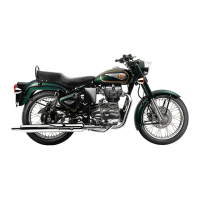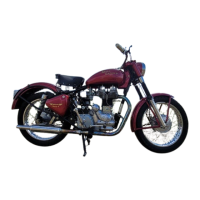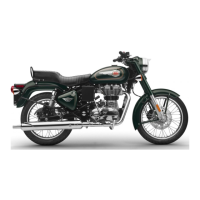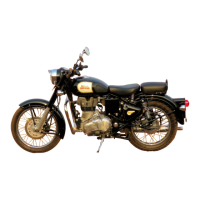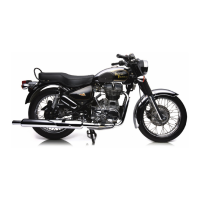CHAPTER
6
-
ENGINE
WORK
TOP END OVERHAUL
Do You Need A Top-End Job?
If it works, don't fix
it
-
this is an adage to keep in mind at all times when about to work on anything. But if your
symptoms include poor compression, then top end work
is
indicated. First, check the compression.
Checking Compression
'The very best way to check compression is by the Leakdown Method. The piston
is
brought to TDC on the
compression stroke
-
both valves closed. The spark plug
is
removed and replaced with an air fitting connected
to an air source with a pressure gauge teed into the line. Air
is
introduced into the cylinder via a valve from the
air source
(a tank of compressed air
is
good),
and once the valve is closed, the combustion chamber should hold
air pressure for some time
-
the shorter the time period, the worse off the engine. While the air
is
being
applied,
it
is often helpful to listen at the carburetor intake and at the exhaust pipe
,
as well as at the crankcase
breather, for escaping air
-
a hiss from any of these will tell you what's leaking.
NB: the Bullet has one further little wrinkle
-
the decompressor valve may be leaking
-
this will permit the escape
of air into the exhaust system. If your only leak seems to be from the exhaust pipe, remove the decompressor
valve, disassemble, and lap the parts in with lapping compound, using a screwdriver in the slot in the valve head
to turn it back and forth. Reassemble and check again before going any further with the top end work
-
you may
have cured your problem!
A
leakdown test kit
is
a worthwhile addition to the shop, and
it
is
recommended that you build, buy, borrow, or
rent one to check your top end if you are not entirely sure that you have a leakage problem. There are two other
less reliable methods to check, however, and a conclusive indication from either one of these may also be worthy
of consideration. Caution: be sure your valve clearances aren't too tight!
First, the kickstarter. Standing on the kickstarter on compression stroke should support your weight without the
engine turning over
-
at least if the engine has been run in the past few minutes, and the oil
is
up where it needs
to be. Comparison with a known-good machine
is
helpful here also, obviously such parameters as rider weight,
compression ratio, etc. will make a difference. But if you once could, and now it just rolls right over, you know
you likely have a top-end problem. This one can be used in conjunction with having another person listen at the
three places mentioned above as well.
And finally, an automotive-type compression gauge. Once again, comparison with a known-good engine
is
pretty
well a necessity, since the parameters of kick-over speed, the gauge itself, etc. will make a difference. A screw-in
type of compression gauge, and a number of kicks before accepting the reading are good ideas here as well. It
should be borne in mind, however, that an automotive type gauge is intended to use to compare readings between
cylinders on multi-cylindered auto engines, and the lack of a "base line" for comparison makes decision difficult.
If no compression at all can be detected, though, you still know you have a problem.
"Wet And Dry" Compression Testing
If two successive compression tests are done, with the second done after removing the gauge and oiling the
cylinder, a comparison between ring sealing and valve sealing may be made. Remove the compression gauge,
72'
The
Enfield
BULLET MANUAL
by
Pete
Snidal
O
2002
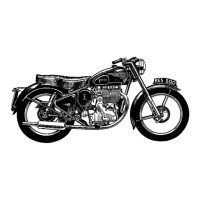
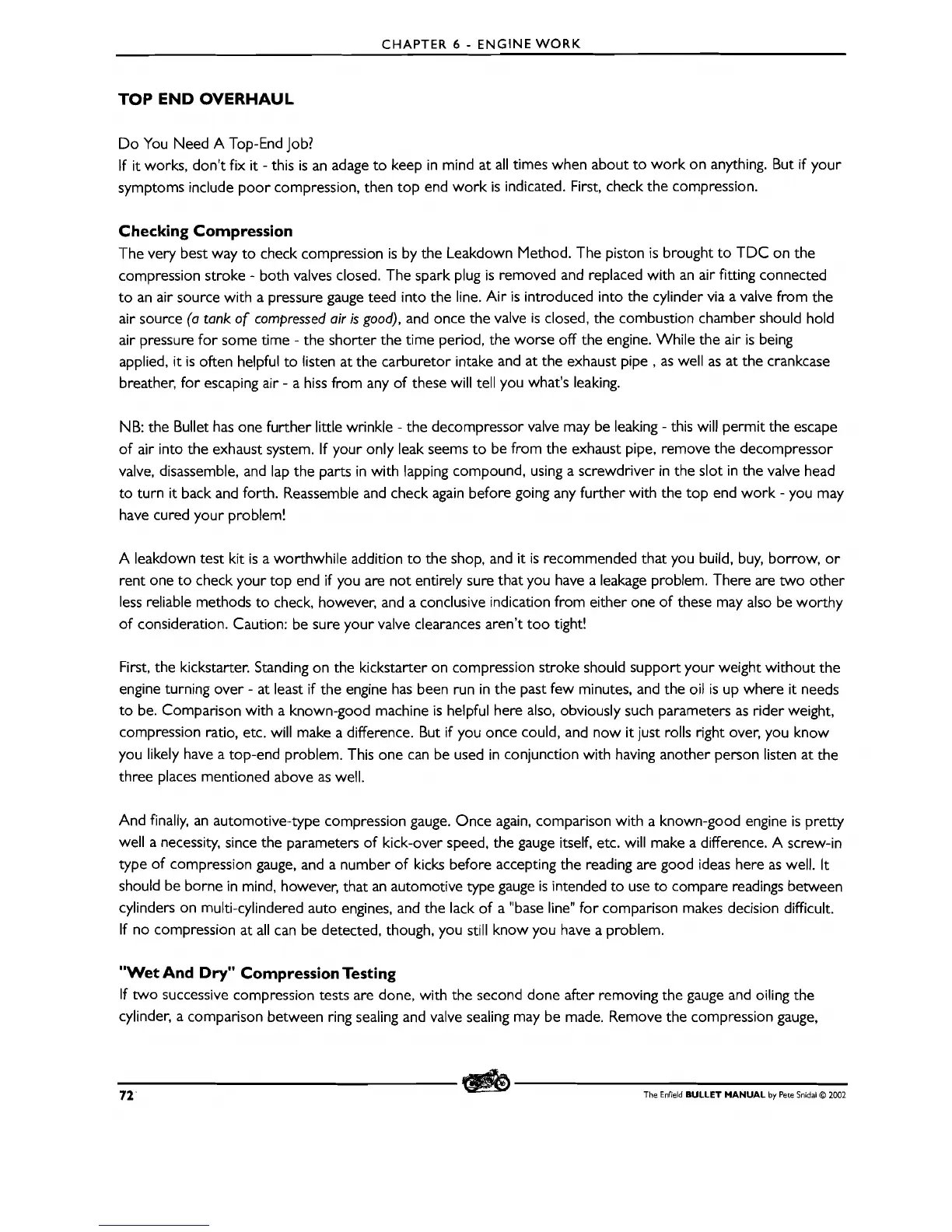